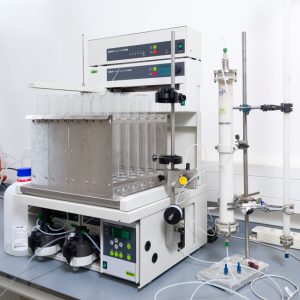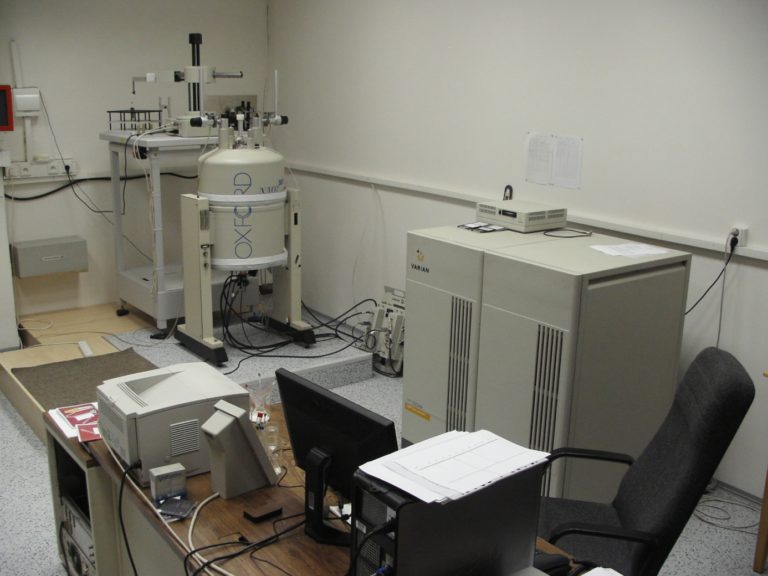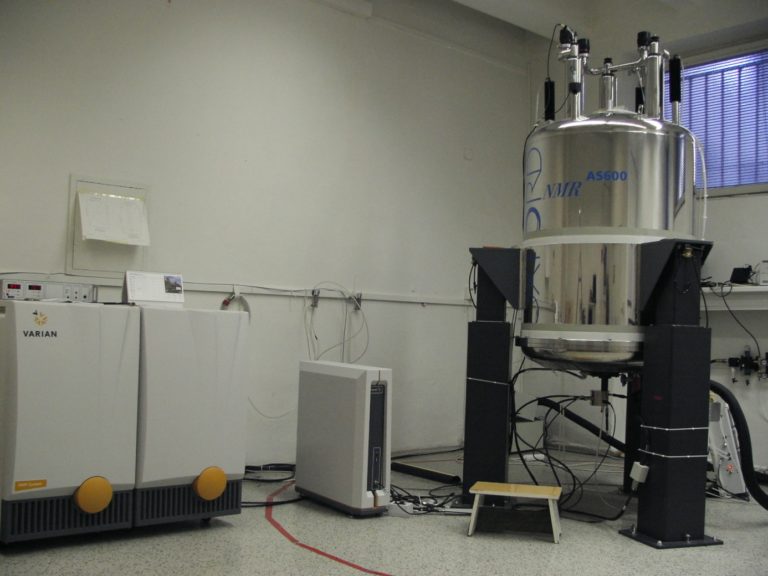hplc
High-performance liquid chromatography (HPLC) is a technique in analytical chemistry used to separate, identify, and quantify each component in a mixture. It relies on pumps to pass a pressurized liquid solvent containing the sample mixture through a column filled with a solid adsorbent material. Each component in the sample interacts slightly differently with the adsorbent material, causing different flow rates for the different components and leading to the separation of the components as they flow out of the column.
HPLC has been used for manufacturing (e.g., during the production process of pharmaceutical and biological products), legal (e.g., detecting performance enhancement drugs in urine), research (e.g., separating the components of a complex biological sample, or of similar synthetic chemicals from each other), and medical (e.g., detecting vitamin D levels in blood serum) purposes.
HPLC is used to determine purity, stereochemistry and d.r. and e.e. of desired products.

mplc
Mediul pressure liquid chromatography in chemistry is a chromatography method used to isolate a single chemical compound from a mixture. Chromatography is able to separate substances based on differential adsorption of compounds to the adsorbent; compounds move through the column at different rates, allowing them to be separated into fractions. The technique is widely applicable, as many different adsorbents (normal phase, reversed phase, or otherwise) can be used with a wide range of solvents. The technique can be used on scales from micrograms up to kilograms.
MPLC is used to separate components from the reaction mixture (crude).
A thin-layer chromatograph can show how a mixture of compounds will behave when purified by column chromatography. The separation is first optimised using thin-layer chromatography before performing column chromatography.

LCMS
Liquid chromatography–mass spectrometry (LC-MS) is an analytical chemistry technique that combines the physical separation capabilities of liquid chromatography (or HPLC) with the mass analysis capabilities of mass spectrometry (MS). Coupled chromatography – MS systems are popular in chemical analysis because the individual capabilities of each technique are enhanced synergistically. While liquid chromatography separates mixtures with multiple components, mass spectrometry provides structural identity of the individual components with high molecular specificity and detection sensitivity. This tandem technique can be used to analyze biochemical, organic, and inorganic compounds commonly found in complex samples of environmental and biological origin. Therefore, LC-MS may be applied in a wide range of sectors including biotechnology, environment monitoring, food processing, and pharmaceutical, agrochemical, and cosmetic industries

NMR
Nuclear magnetic resonance (NMR) is a physical observation in which nuclei in a strong constant magnetic field are perturbed by a weak oscillating magnetic field and respond by producing an electromagnetic signal with a frequency characteristic of the magnetic field at the nucleus. NMR results from specific magnetic properties of certain atomic nuclei. Nuclear magnetic resonance spetroscopy is widely used to determine the structure of organic molecules in solution and study molecular physics, crystals as well as non-crystalline materials. NMR is also routinely used in advanced medical imaging techniques, such as in magnetic resonance imaging (MRI).
We provide measurements of 1H and 13C spectra on 300 and 600 MHz spectrometer.


Rotary evaporator
A rotary evaporator is a device used in chemical laboratories for the efficient and gentle removal of solvents from samples by evaporation.

